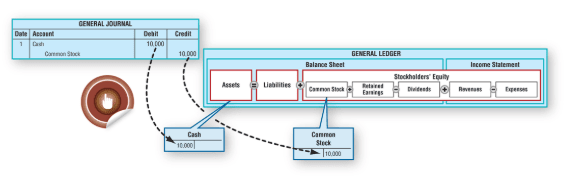Difference Between Journal and Ledger Accoutning

A diary in which a person writes about his/her daily life, emotions, and feelings is also called a journal. Calculating the financial statement per head is possible via the entries of the ledger. The Journal is the initial record, and the Ledger is the detailed summary based on journal entries. It doesn’t have all the details but tells you where to find specific information about your accounts. So, when you want to analyze your overall financial health, you go to the Ledger to find the right book (or account) to read. Think of a journal like a detailed diary where every little thing you do with your money is written down.
Transaction Recording:
So, both your Journal and Ledger are important tools to help auditors keep your money safe. Instead of writing down every single candy and toy, you group them into categories like “candy” and “toys.” So, instead of knowing you bought 100 candies, you know you spent $100 on candies. It’s like looking at the big picture of your spending without all the tiny details. Imagine your Journal as a storybook where things are written in order, like when they happened. But a ledger is more like a puzzle book where things are organized by categories, not in a specific order.
The importance of journals and ledgers
- It’s like putting all the goals into one column and all the assists into another.
- It guides journal transaction recording and ledger organization.
- This means transactions are automatically updated in both by the software.
- The entries in the journal are then collated and categorized into five relevant accounting items that include expenses, assets, revenues, liabilities and capital.
- Let us discuss other such differences between these two key accounting concepts through the points below.
You will learn this income summary concept and journal entries in the next section. Even if you’re using an automated accounting software application, for your financial statements to be accurate, you will need to complete adjusting entries. Once general journal entries are recorded in the general ledger, the general ledger balances should be transferred to a trial balance report, where account balances can be checked for accuracy. Once a transaction is posted in a general journal, the next step is to classify the transactions based on the accounts they affect. Both are essential for any business, forming a core part of your accounting system.
Compound Entry
The ledger is a book or electronic system that contains individual accounts for each asset, liability, equity, revenue, and expense. It provides a summarized view of the financial activities of a business, allowing for easy analysis and reporting. Transactions that first appear in the journals Oil And Gas Accounting are subsequently posted in general ledger accounts.


In summary, while the Journal captures every transaction as it happens, the Ledger classifies and summarizes these amounts under their respective account heads. Mastery of both ensures total command over basics of accounting and accurate financial results. Despite advances in software difference between journal and ledger technology, there will always be a need to record non-routine transactions in general journals, such as sales of assets, bad debt, partial payments, and depreciation. Except for nominal accounts, all ledger accounts are balanced to find the net result. It is known as the principal book of accounting or the book of final entry. You can automate both your general journal and general ledger with modern accounting software.
Trial Balance Errors: How To Identify & Rectify!
Every financial transaction completed by your business needs to be adequately recorded. Because the information in the general journal is organized by date and not by account, the information it provides is not very useful. Now that we understand the basics of both a general ledger and a general journal, let us refer the infographics below to understand their differences better through the visual representation. Primary book of accounting or the book of original/first entry. But in statement format of ledger account contains six columns.

Preparation of trial balance and financial statements

Business organisations such as sole proprietors, firms and companies maintain books of accounts to record their business transactions. Double entry system of accounting follows certain standard books of accounts for recording business transactions. These begin with preparation of chart of accounts to preparation of journal, posting to ledger accounts and compiling of trial balance. These books of accounts are the basis for preparing financial statements. Modern accounting software has made bookkeeping simpler, especially for small businesses. This technology streamlines the journal and ledger entry process.
- Although Journal and Ledger remained apart, there is a difference between Journal and Ledger.
- For example, when you sell a bike, your asset value goes down, and you receive money in return, increasing your cash balance.
- Indeed, a ledger can have the opening balance as well as the closing balance.
- These begin with preparation of chart of accounts to preparation of journal, posting to ledger accounts and compiling of trial balance.
- Each entry in the journal typically includes the date of the transaction, the accounts affected, the amounts to be debited or credited from each account, and a brief description of the transaction.
- The balance sheet tells you how much your business owns, how much it owes, and its shareholder’s equity.
Read on to find out more about them and how you can use them for your business. The general journal is described as the book of original entry. Today the general journal is used to record adjusting entries and transactions other than payments, receipts, or payroll. An entry in the general journal will include the date, the account with the amount that is to be debited, the account with the amount that is to be credited, and a brief description.


 English
English